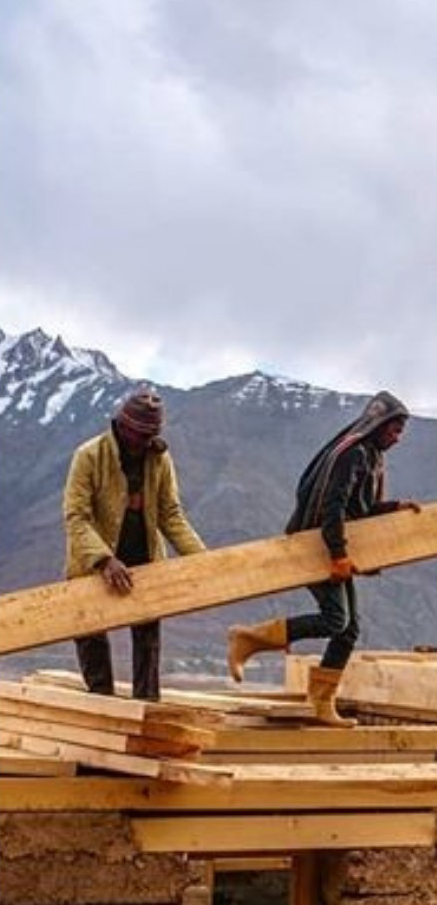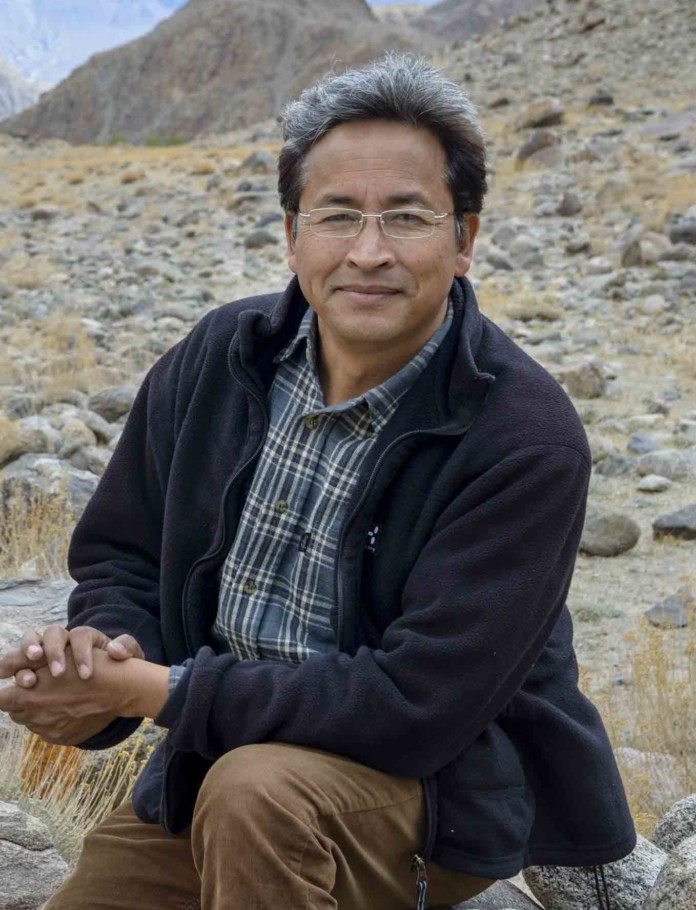The new Union Territory status to Ladakh from October 2019 has come as a shot in the arm for the futuristic Himalayan Institute of Alternative Ladakh (HIAL), popularly known as the ‘mountain university’. Conceived in 2015 by Sonam Wangchuk HIAL is seriously attempting to reclaim Ladakh’s heritage and reimagine its future at the same time.
With regards to the overall governance and institutional framework, Ladakh now has the potential of charting its own course for sustainable development which otherwise was followed with limited or no direction from the state headquarters (in Srinagar).
HIAL was conceived to establish an alternative university that would engage mountain youth in studies related to their own unique environment and employment needs. Here, learning happens through a hands-on approach.
Courses are meant to equip students with real-life skills and offers opportunities to work in ventures where they have a stake in the outcome. It stems from the belief that solutions to Ladakh’s linguistic, ethnic, climatic and technological problems could be found within. Students would be trained to be the architects of the future for the Himalayan region.
The University was kickstarted by Mr. Wangchuk’s seed capital of Rs. One crore which he won in a global prize. Rs. 7 crore was crowdsourced recently. Being financially independent is one of the pillars of this establishment.
While the University is still being built in phases, the foundation courses have begun in schools of Responsible Tourism, Responsive Buildings, Applied Ecology, Forestry and Agriculture and Social Entrepreneurship. It’s ready to offer certificate courses in Plantation and Tourism in 2020.
HIAL is experimenting with the idea of student-run schools, monasteries and hotels in a sustainable way – both financially and ecologically, an effort to teach responsibility from an young age.
It could be said that the alternative university is a bigger version of Students Education and Cultural Movement of Ladakh – SECMOL experiment, started by a group of Ladakhis including Soman Wangchuk in 1988 . It was meant to be an alternative school with an eco-friendly campus near Leh, the capital of Ladakh.
Aggressive Sustainability Solutions

Ladakh has had a history of conflict with the state government in Srinagar over development options, education system, for maintaining its unique heritage and how it wanted to manage its economy. Now, with greater autonomy, it is imperative for Ladakhis to address their water, energy and tourism challenges in unique ways as part of their growth plans.
Despite being so close to Himalayas, Ladakh faces water problems in summer which turns the land into vast cold desert. The secret to conserving water from evaporating led Wangchuk, an engineer, to design the now famous artificial glaciers called ‘Ice Stupas’ – massive conical structures that retain water from ice much longer so that it would be available even during the summer months of April and May.
“50 ice stupas are being planned with the hope that they could help in farming during summer months as well. The grand initiative to turn the grey desert into green is also meant to develop communities around ice stupas,” according to Sanjay Prakash, co-founder of the Future Institute. HIAL is a bold initiative of the Future Institute (https://www.futureinstitute.in).
How ice stupas are built – https://www.youtube.com/watch?v=-1s0K_MKAgI
https://www.youtube.com/watch?v=FIfnw_PxweA
Solar Energy
More innovations for retaining heat in mud homes is being tested. Ladakh gets sunshine for 340 days and retaining heat inside homes during cold nights is a challenge. To make the homes lighter, straws are being combined with mud so that their temperature retention is easier and longer. The mud houses are typically at about 4 or 5 degree Celsius warmer inside compared to minus 10 or 20 degree Celsius outside.
Eco-tourism is a big opportunity in Ladakh as job or entrepreneurial opportunities for youth is limited. The university is designing courses to equip the youth to become social entrepreneurs as well as service providers. Home-stay tourism is being promoted as the mainstay for Ladakh given its unique topography.
The responsible tourism school is addressing the issue of toilets which is a big challenge here. For tourists,
HIAL is Sonam Wangchuk’s dream in the making. But now it has its own independent status and is extending towards embracing more like-minded resources to its team and resource pool to make it a global movement.
What once seemed crazy or vague ideas seem to be taking a definite shape. “They are not just ideas, but are (now) a possibility,” Wangchuk told a journalist recently.
The success of the mountain university could inspire many more so that the country’s youth could escape the clutches of the weather-beaten education system.














